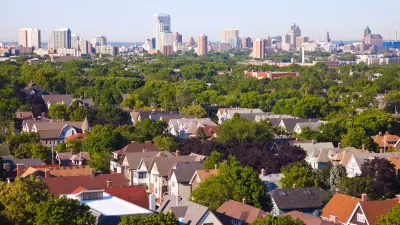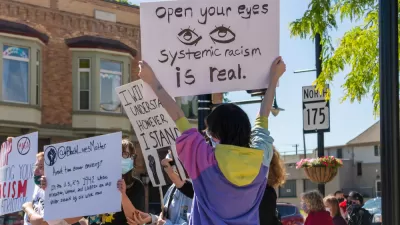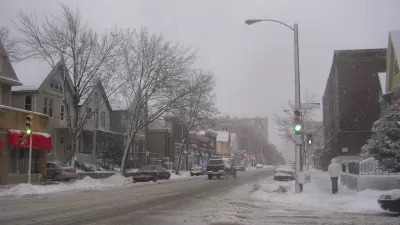The city has plans to increase affordable housing, but some areas are seeing more progress than others.

Susan Nusser reports that Milwaukee’s attempts to deal with a lack of affordable housing is falling short of original goals. Earlier this year, Mayor Tom Barrett presented a plan to build or improve 10,000 units in the next decade. But while development in downtown is bringing a slew of luxury units to the city, progress on the affordable housing front is still lagging, says Nusser.
An issue complicating affordable housing efforts is the concentrations of poverty and foreclosures that resulted from the housing crisis a decade ago. Milwaukee is not alone in facing this challenge, says Nusser:
One of the problems facing cities like Milwaukee—former manufacturing cities that have suffered severe population drops after de-industrialization—are the pockets of concentrated poverty that fail to improve even as other areas recover. As the desirable neighborhoods rebuild after the recession, impoverished ones slip further behind, and deep income disparities result.
This hypervacancy perpetuates a cycle where neighborhoods deteriorate and some people are able to move away while others are forced to stay.
Community advocates say that broader strategies, rather than ones that focus on just on housing policies and programs, are needed to turn these neighborhoods around, keep residents, and attract new ones. “Neighborhood residents are interested in developing cooperative housing and land grants that would give the community some authority over board-ups and vacant lots,” says Nusser.
FULL STORY: Can Milwaukee Really Create 10,000 Affordable Homes?

Planetizen Federal Action Tracker
A weekly monitor of how Trump’s orders and actions are impacting planners and planning in America.

San Francisco's School District Spent $105M To Build Affordable Housing for Teachers — And That's Just the Beginning
SFUSD joins a growing list of school districts using their land holdings to address housing affordability challenges faced by their own employees.

The Tiny, Adorable $7,000 Car Turning Japan Onto EVs
The single seat Mibot charges from a regular plug as quickly as an iPad, and is about half the price of an average EV.

With Protected Lanes, 460% More People Commute by Bike
For those needing more ammo, more data proving what we already knew is here.

In More Metros Than You’d Think, Suburbs are Now More Expensive Than the City
If you're moving to the burbs to save on square footage, data shows you should think again.

The States Losing Rural Delivery Rooms at an Alarming Pace
In some states, as few as 9% of rural hospitals still deliver babies. As a result, rising pre-term births, no adequate pre-term care and "harrowing" close calls are a growing reality.
Urban Design for Planners 1: Software Tools
This six-course series explores essential urban design concepts using open source software and equips planners with the tools they need to participate fully in the urban design process.
Planning for Universal Design
Learn the tools for implementing Universal Design in planning regulations.
Smith Gee Studio
City of Charlotte
City of Camden Redevelopment Agency
City of Astoria
Transportation Research & Education Center (TREC) at Portland State University
US High Speed Rail Association
City of Camden Redevelopment Agency
Municipality of Princeton (NJ)





























